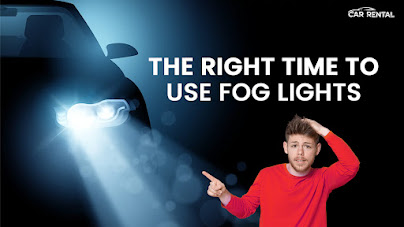The Right Time to Use Fog Lights
Fog lights are an essential component of a vehicle’s lighting system, designed to improve visibility in adverse weather conditions such as fog, mist, snow, or heavy rain. While many drivers understand the importance of fog lights, knowing when to use them effectively can enhance safety on the road and reduce the risk of accidents. In this article, we explore the right time to use fog lights and provide valuable insights for drivers.
1. Understanding Fog Lights
Before delving into when to use fog lights, it’s essential to understand their purpose and functionality. Fog lights are typically mounted lower on the front bumper of a vehicle compared to headlights. They emit a wide, low beam of light that illuminates the road surface directly in front of the vehicle, enhancing visibility in conditions where standard headlights may be ineffective due to fog or other obstructions.
2. When to Use Fog Lights
2.1. In Foggy Conditions
As the name suggests, fog lights are primarily intended for use in foggy conditions. When driving in dense fog or mist where visibility is significantly reduced, fog lights can penetrate the fog and illuminate the road ahead, making it easier for drivers to see potential hazards and obstacles.
2.2. During Heavy Rain or Snow
Fog lights can also be beneficial during heavy rain or snowfall when visibility is compromised. The low, wide beam pattern of fog lights helps to cut through the rain or snow, reducing glare and reflections that can impede visibility with standard headlights.
2.3. In Low-Light Conditions
In addition to adverse weather conditions, fog lights can be useful in low-light situations such as dawn, dusk, or nighttime driving. While not as powerful as headlights, fog lights provide supplementary illumination close to the ground, improving peripheral visibility and enhancing overall safety.
3. When Not to Use Fog Lights
While fog lights can improve visibility in certain conditions, there are times when it’s inappropriate or even illegal to use them:
3.1. In Clear Weather Conditions
Using fog lights unnecessarily in clear weather conditions can dazzle other drivers and create glare, potentially causing accidents. It’s essential to switch off fog lights when visibility is good and reserve their use for when they are truly needed.
3.2. In Well-Lit Urban Areas
In well-lit urban areas with streetlights or ample ambient lighting, fog lights may not provide any significant visibility benefits. In such cases, it’s best to rely on standard headlights and avoid using fog lights to prevent unnecessary glare and distraction to other road users.
4. Conclusion
In conclusion, knowing when to use fog lights is essential for safe driving in adverse weather conditions. By understanding their purpose and limitations, drivers can effectively utilize fog lights to enhance visibility and reduce the risk of accidents. Remember to use fog lights responsibly and switch them off when they are not needed to ensure the safety of yourself and other road users.
Unique FAQs
Can I use fog lights instead of headlights?
- No, fog lights are designed to complement headlights in adverse weather conditions but should not be used as a substitute for headlights in normal driving conditions.
Are fog lights mandatory equipment on vehicles?
- Fog lights are not mandatory equipment on all vehicles but are highly recommended for driving in foggy or low-visibility conditions.
Do fog lights improve visibility during daytime fog?
- While fog lights can provide some improvement in visibility during daytime fog, their effectiveness may be limited compared to their performance at night or in low-light conditions.
Can I install aftermarket fog lights on my vehicle?
- Yes, many vehicles allow for the installation of aftermarket fog lights to enhance visibility in adverse weather conditions. However, it’s essential to ensure that the installation complies with local regulations and does not create glare or distraction for other road users.
Do fog lights consume more energy than standard headlights?
- Fog lights typically consume less energy than standard headlights due to their lower power output and specialized beam pattern, making them more energy-efficient for prolonged use in adverse weather conditions.

.jfif)
.jfif)

Comments
Post a Comment